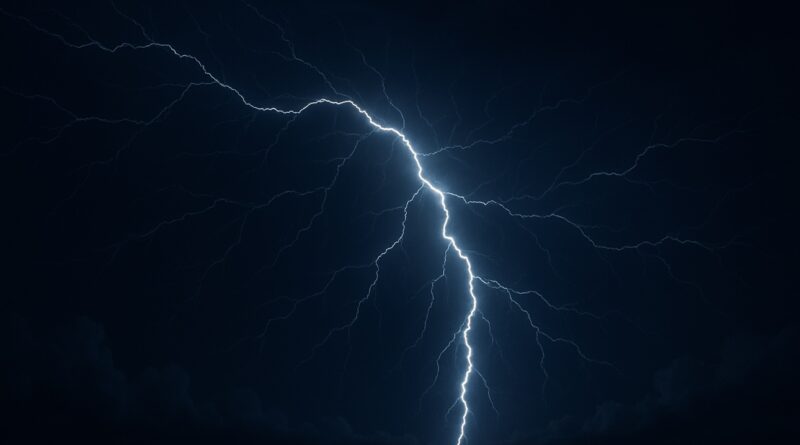Scientists Calculated Lightning Strikes With Mathematical Precision For The First Time
Credit: ChatGPT
For the first time in decades, scientists have managed to model the entire process that precedes the appearance of lightning – from the initial photoelectric phenomena to the formation of a shock discharge. The results were published by a group of physicists from Pennsylvania State University.
Scientists studying the atmosphere know how charged particles interact in clouds. Protons rise, and electrons in the cloud descend closer to the ground – to the lower part of the clouds. The negative charge accumulated in the lower part of the cloud pushes electrons on the surface of the earth deep into it with its field. Thus, the surface of the planet under the cloud acquires a positive charge. The accumulation of charges occurs until a breakdown channel is established between the cloud and the ground, and we observe lightning.
The new work made it possible to describe in detail and quantitatively the last seconds and even fractions of a second before the discharge.
“We explained how photoelectric phenomena occur, what conditions must exist in thunderclouds to launch a cascade of electrons, and what causes the wide range of radio signals that we observe in the clouds before a lightning strike,” the researchers explained. “To confirm our explanation of how lightning occurs, we compared our results with previous models, observations, and our own work on a type of lightning called compact intercloud discharges, which typically occur in small, localized regions of thunderclouds.”
Of particular interest is the explanation of the nature of “dark lightning” – gamma-ray bursts that are not accompanied by a flash of light and do not leave traces in the radio range.
According to scientists, such bursts often occur in cloud regions that are visually dim and do not produce radio signals. This explains why “dark lightning” remains invisible to ordinary observations.




